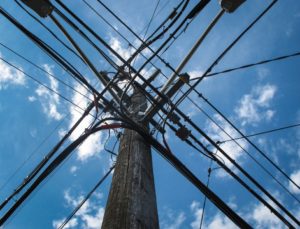 Winter 2022 is coming to a close, and Texas residents can breathe a sigh of relief. The Texas energy grid survived the winter season without incident. After 2021’s devastating storm and subsequent freeze, many were concerned whether the Lone Star State was prepared should another weather crisis occur. In Early February 2022, Texas once again faced low-temperature extremes — but this time, the system held on. What was different this time around?
Winter 2022 is coming to a close, and Texas residents can breathe a sigh of relief. The Texas energy grid survived the winter season without incident. After 2021’s devastating storm and subsequent freeze, many were concerned whether the Lone Star State was prepared should another weather crisis occur. In Early February 2022, Texas once again faced low-temperature extremes — but this time, the system held on. What was different this time around?
Legislation and Policy
Texas lawmakers passed legislation immediately following Winter Storm Uri; the bill included several measures to prevent another winter disaster (i.e., weatherization mandates and an emergency alert system). Because Texas holds a lot of autonomy over its electric grid, the Electric Reliability Council of Texas (ERCOT) was able to get generators online quickly without additional red tape.
Infrastructure
Thanks to the quick response from leadership, Texas energy companies were able to prioritize much-needed infrastructure improvements. A new inspection team audited facilities to help assess needed structural repairs, and the team followed up to ensure energy providers followed through. ERCOT officials required proof of readiness for severe weather and even performed unannounced tests. Energy facilities implemented new insulation strategies to prevent freezing pipes and protect transmission lines, even going so far as to add portable heaters and build windbreaks around machinery. Companies faced hefty fines if they weren’t complying with weatherization best practices.
Increased Power Reserves
Based on the 2021 electricity demand, ERCOT increased its operational power reserves in preparation for winter 2022. Essentially, should the electricity generators fail, the grid had enough backup power to continue to service Texas residents. In 2021, there was a shortage in natural gas production, which accounts for the majority of Texas home heating; this time around, natural gas providers maintained their supply. What’s more, this year’s winter storm was especially windy, which consequentially augmented wind power’s contribution to the grid. Overall, ERCOT officials collaborated with fuel providers and improved communication channels among energy stakeholders and state agencies. Texas bulked up its electricity generation ahead of the cold weather predictions — ultimately, temperatures didn’t dip as low as expected, but the fuel supplies were ready nonetheless. This will raise electricity rates in Arlington, at least temporarily.
Education
One of the main reasons Texas persevered this winter is simple: people were ready. With winter weather looming, residents took to social media channels to share tips and resources. Last year, locals lost access to television and the internet following widespread blackouts; for 2022, the state’s emergency management division improved its outreach and alert system, expanding efforts to make critical information available in multiple languages. Individuals and cities invested in bottled water reserves and tire chains (for emergency vehicles). Residents were paying closer attention to news outlets and state guidance compared to last year when the rare weather event caught them off guard.
Texas still has some holes to fill concerning winter weather preparedness; unfortunately, these initiatives take time, resources, and funding — all of which are impacted by the pandemic and supply chain issues. Nonetheless, in their first major test since Winter Storm Uri, Texas residents prevailed.